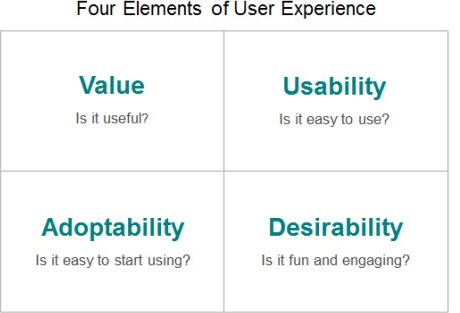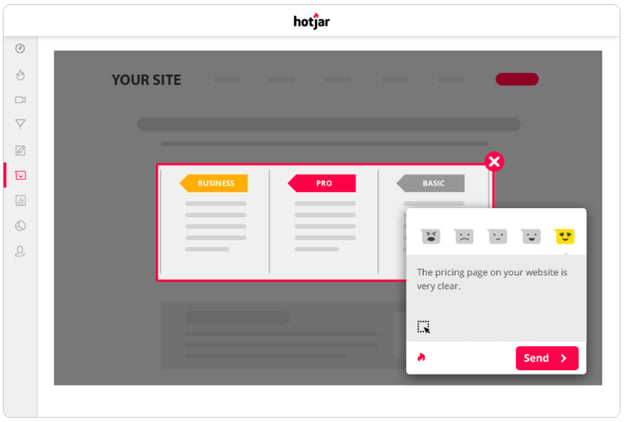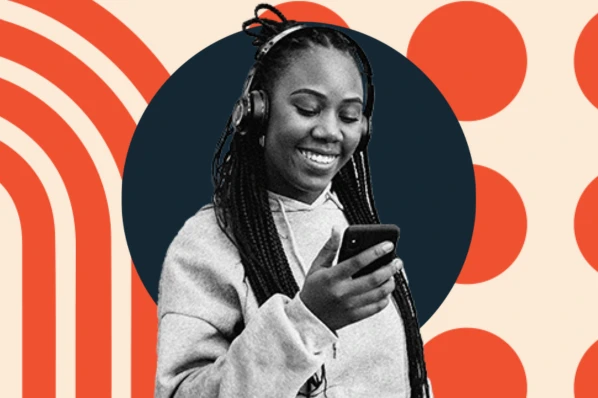When creating a website, app, or other product, your main goal is to meet your user’s needs. To do so, you want the product to be easy to use — but that’s not it. You also want it to be convenient, accessible, pretty, unique, valuable, delightful, and a lot of other things. Why?

Because something that’s easy to use doesn’t necessarily provide a good user experience. Take the delete feature on WhatsApp, for example. Say you’ve sent a message to the wrong chat or made a spelling mistake. To delete the message, you can simply tap and hold the message and click “delete.” Easy enough, right?
The problem is that the message isn’t technically deleted. It’s just blocked and replaced by the following line of text: “This message was deleted” — which sort of defeats the purpose of deleting the message in the first place.

There are worse examples of UX fails on the internet. I giggle at them all, but also know that designing for the user experience is hard.
Part of the reason is that user experience is such a broad term. You might have noticed when searching for a definition that it’s often conflated with other terms like usability. To clarify any misconceptions, let’s define usability and user experience and look at the key differences below.
Usability vs. User Experience
Usability refers to how successfully a user can use a product to accomplish a specific goal. User experience encompasses an end user’s entire experience with a product — not just how well the product worked, but how they expected it to work, how they feel about using it, and how they feel about the company overall.
Basically user experience is the whole pie, and usability is just a sliver of that pie. According to UX strategist and architect Frank Guo in an article for UXmatters, the other three slices are value, adoptabiltiy, and desirability.

Let’s take a closer look at usability, then at user experience as a whole.
What is usability?
Usability refers to how easily a customer can learn and use a product to accomplish a specific goal. For example, can a visitor easily complete the checkout process on your ecommerce site? Can they find specific post on your blog?
Usability testing requires you to gather user feedback about your product’s overall effectiveness and efficiency as well as the user’s satisfaction with the product. During a usability study, a moderator will typically ask participants to complete a series of tasks. The rest of the team will observe users as they complete these tasks and take notes on where they’re encountering problems, experiencing confusion, or delighting in the product’s functionality.
There are plenty of usability testing tools that can help you automate part of this process, or make it remote. Hotjar, for example, is an all-in-one analytics and feedback software with tools like heatmaps, visitor recordings, conversion funnels, feedback polls, incoming feedback, and more. Here’s a demo of their incoming feedback feature.

All of these tools will provide insights for improving the usability of your website or product. You might tweak your navigation structure, identify confusing icons, or adjust button copy based on these results.
While usability obviously impacts the user experience, it is not the entire experience. Let’s define user experience below.
What is user experience?
User experience — commonly abbreviated to UX — refers to all aspects of a user’s interaction with and perception of a company’s product, services, or brand.
So while the goal of usability is creating a product that’s easy to use, the goal of UX is to make the user happy before, during, and after using the product. This is no small feat.
That’s why UX design is an iterative process of researching, planning, testing, and refining every touch point of the user journey. At every stage of this process, you’ll need to perform user testing.
User testing requires you to evaluate what users do and how they feel using the product, from start to finish. Here are some questions you might ask users:
- Is it easy to start using the product?
- Is the user interface intuitive?
- Can you complete different tasks using the product?
- Are you engaged when using the product?
- Is it fun to use the product?
- Does the product add value to your life?
- Would you recommend the product?
User testing includes usability testing as well as surveys, A/B testing, focus groups, and beta testing.
There are plenty of user testing tools you can use to gather these different sources of feedback. Full Story, for example, is a desktop qualitative analytics solution that enables you to see how users interact with your website, identify conversion opportunities, and know if a bug or crash occurs.

Understanding the Difference between Usability and User Experience
There are dozens of ways people try to differentiate usability and user experience. Usability is science; user experience is art. Usability is a freeway; user experience is a twisting mountain road. And so on.
What’s most important to understand is that usability is a subset of the user experience. Without usability, you won’t be able to provide an excellent user experience. But only focusing on usability won’t provide an excellent user experience either.


![What Is End-User Experience Monitoring? [+Tips For Implementing It]](https://blog.hubspot.com/hubfs/end-user-experience-monitoring.png)





